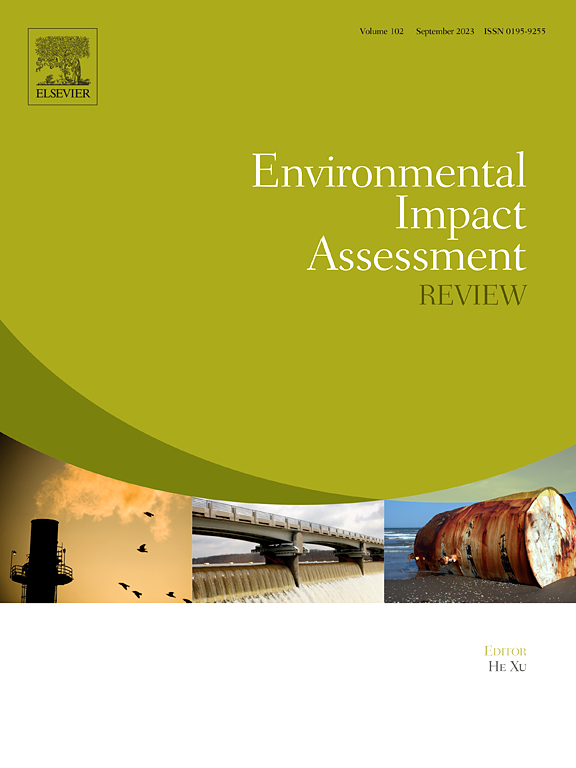Application of environmentally extended social accounting matrix based indicators to address socio-economic and environmental targets in Cameroon
IF 9.8
1区 社会学
Q1 ENVIRONMENTAL STUDIES
引用次数: 0
Abstract
Achieving social, economic, and environmental targets poses significant transitional challenges, requiring countries to adapt to new growth patterns. Cameroon's development strategies prioritize the achievement of the Sustainable Development Goals, focusing on economic growth, formal job creation, and poverty reduction while simultaneously targeting greenhouse gas emissions decreases. To effectively promote policies aligned with these goals, it is necessary to develop specific databases and indicators. This study presents an application of an Environmentally Extended Social Accounting Matrix based indicators for Cameroon: the ‘Employment Intensity of Carbon’ (EIC). This multidimensional multiplier indicator identifies the quantity of employment generated and the associated emissions produced by an increase in demand. The Hypothetical Extraction Method is then proposed to identify and rank relevant sectors. On the basis of the Nationally Determined Contribution, a case study is then presented to demonstrate the indicator's usefulness in providing evidence-based results on achieving environmental sustainability targets and its implications for employment. The analysis highlights which economic sectors need to be improved to achieve the emission reduction targets with the least economic and social impact.
应用基于环境扩展的社会核算矩阵的指标来解决喀麦隆的社会经济和环境目标
实现社会、经济和环境目标带来了重大的过渡性挑战,要求各国适应新的增长模式。喀麦隆的发展战略优先考虑实现可持续发展目标,重点关注经济增长、创造正式就业机会和减少贫困,同时致力于减少温室气体排放。为了有效促进符合这些目标的政策,有必要制定具体的数据库和指标。本研究提出了基于喀麦隆环境扩展社会会计矩阵指标的应用:“碳就业强度”(EIC)。这一多维乘数指标确定了因需求增加而产生的就业数量和相关排放。然后提出了假设提取方法来识别和排序相关部门。然后,在国家自主贡献的基础上,提出了一个案例研究,以证明该指标在提供实现环境可持续性目标的循证结果及其对就业的影响方面的有用性。分析强调了哪些经济部门需要改进,以实现减排目标,同时经济和社会影响最小。
本文章由计算机程序翻译,如有差异,请以英文原文为准。
求助全文
约1分钟内获得全文
求助全文
来源期刊

Environmental Impact Assessment Review
ENVIRONMENTAL STUDIES-
CiteScore
12.60
自引率
10.10%
发文量
200
审稿时长
33 days
期刊介绍:
Environmental Impact Assessment Review is an interdisciplinary journal that serves a global audience of practitioners, policymakers, and academics involved in assessing the environmental impact of policies, projects, processes, and products. The journal focuses on innovative theory and practice in environmental impact assessment (EIA). Papers are expected to present innovative ideas, be topical, and coherent. The journal emphasizes concepts, methods, techniques, approaches, and systems related to EIA theory and practice.
 求助内容:
求助内容: 应助结果提醒方式:
应助结果提醒方式:


